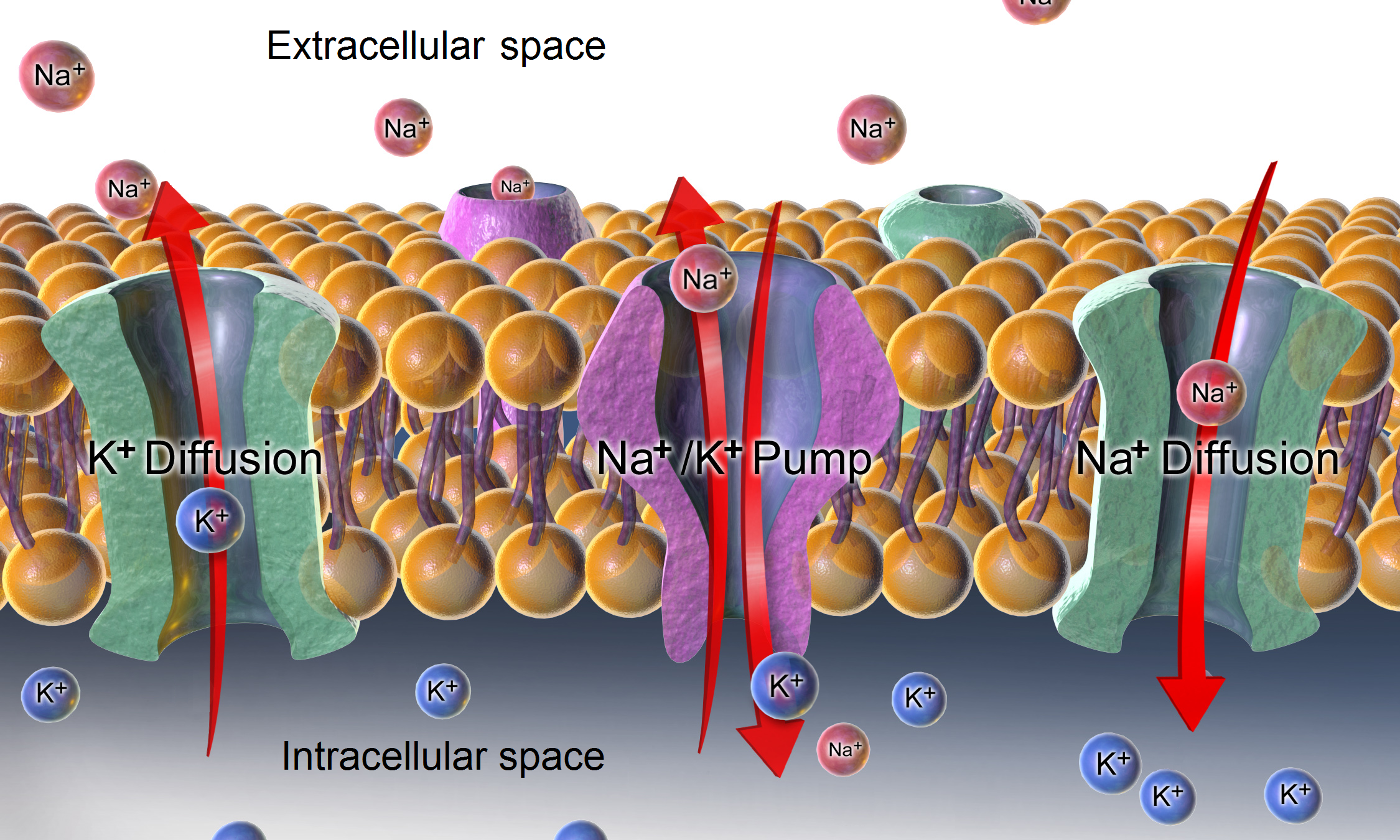Introduction to Neurophysiology
Original Editor - Joanne Garvey.
Top Contributors - Joanne Garvey, Lucinda hampton, Kim Jackson, Rachael Lowe, Naomi O'Reilly, Tarina van der Stockt, WikiSysop, Simisola Ajeyalemi, Jess Bell and Admin
Ion Channels[edit | edit source]
- An ion channel is a protien macromolecule that crosses the breadth of a membrane and allows molecules to pass through. The ions move in a direction determined by the electrochemical gradient across the membrane.
- Ions tend to flow from an area of high concentration to an area of low concentration.
- In the presence of a voltage gradient, there may be no flow of ions depite unequal concentrations.
- Ion channels can be open or closed.
- Opening is brought about by changing the voltage across the membrane, or binding a chemical substance to a receptor.
- Most important role is that they provide the neuron with electrical excitability.
- Found in all parts of the neuron and to a lesser extent in the neuroglial cells.
Types of channel
- Voltage gated
- Chemically Activated
- Mechanical stretch/pressure.
Fundamental properties of an Ion Channel.
- It is made up of a number of protien sub units, sitting across the membrane, allowing ions to cross from one side to the other. (Transmembrane pore)
- The channel must be able to move from open to closed state, and back.
- Must be able to open in response to the appropriate stimuli.
Some channels respond to chemical stimulus (particularly at the synapse). These channels have specific receptors for that chemical, that leads to channel opening.
Resting Membrane and Action Potential[edit | edit source]
- In the resting state, the neuronal cell membrane is fairly impermeable to ions. This is crucial for the generation of theresting membrane potential.
- The major intracellular ion is Potassium (It is sodium in the extracellular fluid).
- The natural flow of ions by way of their concentration gradients is for K+ to leave the cell and Na+ to enter.
- This movement of ions out of the cell leads to a negative membrane potential - Hyperpolarisation.
- The opposite is true for a relative influx of ions - Hypopolarisation.
The resting membrane is relatively impermeable to Na+ ions, while remaining permeable to K+ ions. So when the membrane is at rest, there will tend to be an efflux of K+ ions out of the cell, down its concentration gradient, leaving excess negative charge behind. This continues until the chemical concentration gradient that is driving out the K+ from the cell is exactly at the point where it is offset by the electrical potential difference generated by this efflux. (the membrane potential) K+ is then drawn back into the cell.
This steady state of the membrane is called the Equilibrium Potential.
The equation for deriving the equilibrium potential is called the Nernst equation.
There is actually a slightly unexpected increased positive charge in axons due to a small permeability to Na+ ions of the membrane in the resting state. This is offset by ATP dependent Na+/K+ exchange pump. I pumps out 3 Na+ ions for every 3K+ ions brought in to the cell. However, it makes only a tiny contribution to the resting membrane potential of the cell.
Action Potential
Defined as a "single electrical impulse passing down an axon".
It is all or nothing in its action. This means that once the threshold stimulus intensity is reached, an action potential will be generated.
Information in the nervous system is coded and interpreted by the frequency of firing.
Neuromuscular Junction/ Synapses[edit | edit source]
Nerve Conduction[edit | edit source]
Neurotransmitters, receptors and pathways[edit | edit source]
Sensory Systems[edit | edit source]
Motor Systems[edit | edit source]
Recent Related Research (from Pubmed)[edit | edit source]
Extension:RSS -- Error: Not a valid URL: Feed goes here!!|charset=UTF-8|short|max=10
References[edit | edit source]
References will automatically be added here, see adding references tutorial.







